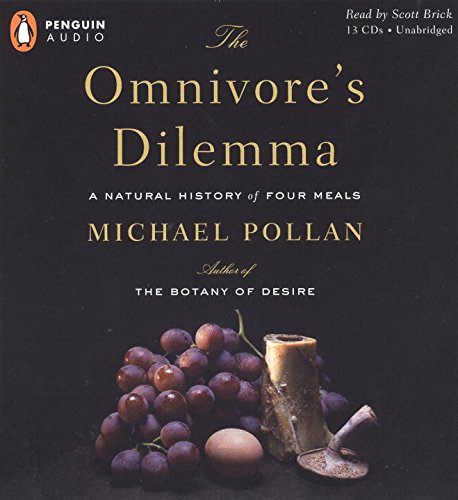In Defense of Food: An Eater's Manifesto




Pollan has divided The Omnivore's Dilemma into three parts, one for each of the food chains that sustain us: industrialized food, alternative or "organic" food, and food people obtain by dint of their own hunting, gathering, or gardening. Pollan follows each food chain literally from the ground up to the table, emphasizing our dynamic coevolutionary relationship with the species we depend on. He concludes each section by sitting down to a meal—at McDonald's, at home with his family sharing a dinner from Whole Foods, and in a revolutionary "beyond organic" farm in Virginia. For each meal he traces the provenance of everything consumed, revealing the hidden components we unwittingly ingest and explaining how our taste for particular foods reflects our environmental and biological inheritance.
We are indeed what we eat-and what we eat remakes the world. A society of voracious and increasingly confused omnivores, we are just beginning to recognize the profound consequences of the simplest everyday food choices, both for ourselves and for the natural world. The Omnivore's Dilemma is a long-overdue book and one that will become known for bringing a completely fresh perspective to a question as ordinary and yet momentous as What shall we have for dinner?
A few facts and figures from The Omnivore's Dilemma: A Natural History of Four Meals
Of the 38 ingredients it takes to make a McNugget, there are at least 13 that are derived from corn. 45 different menu items at Mcdonald’s are made from corn.
One in every three American children eats fast food every day.
One in every five American meals today is eaten in the car.
The food industry burns nearly a fifth of all the petroleum consumed in the United States¯more than we burn with our cars and more than any other industry consumes.
It takes ten calories of fossil fuel energy to deliver one calorie of food energy to an American plate.
A single strawberry contains about five calories. To get that strawberry from a field in California to a plate on the east coast requires 435 calories of energy.
Industrial fertilizer and industrial pesticides both owe their existence to the conversion of the World War II munitions industry to civilian uses—nerve gases became pesticides, and ammonium nitrate explosives became nitrogen fertilizers.
Because of the obesity epidemic, today’s generation of children will be the first generation of Americans whose life expectancy will actually be shorter than their parents’ life expectancy.
In 2000 the UN reported that the number of people in the world suffering from o...
| Country | USA |
| Author | Michael Pollan |
| Binding | Audio CD |
| Brand | Pollan, Michael/ Brick, Scott (NRT) |
| EAN | 9780143058410 |
| Edition | Unabridged |
| ISBN | 014305841X |
| Label | Penguin Audio |
| Manufacturer | Penguin Audio |
| MPN | 9780143058410 |
| NumberOfItems | 11 |
| PartNumber | 9780143058410 |
| PublicationDate | 2006-04-11 |
| Publisher | Penguin Audio |
| ReleaseDate | 2006-04-11 |
| Studio | Penguin Audio |